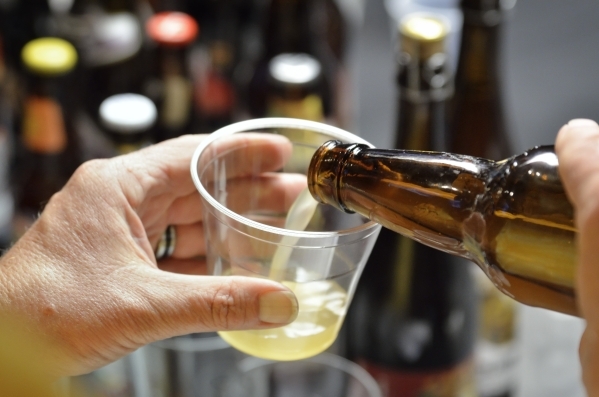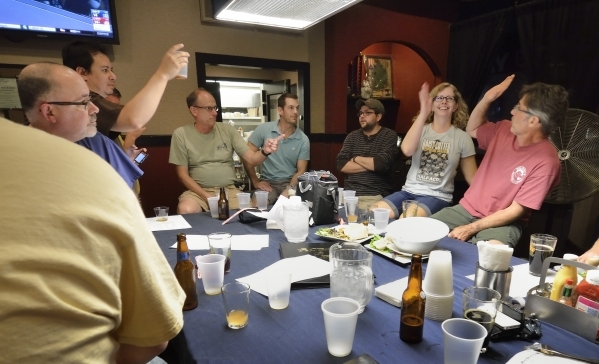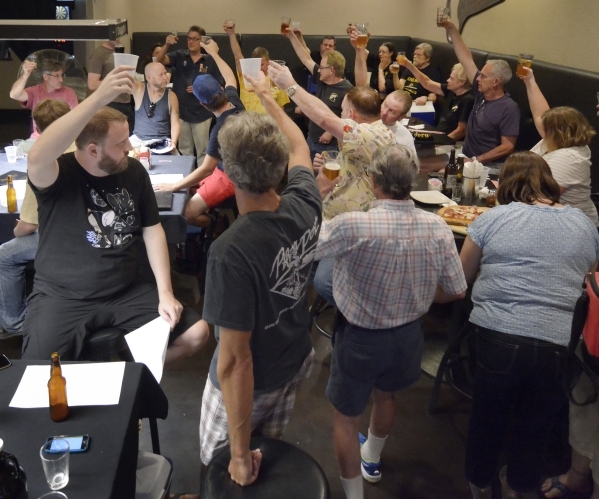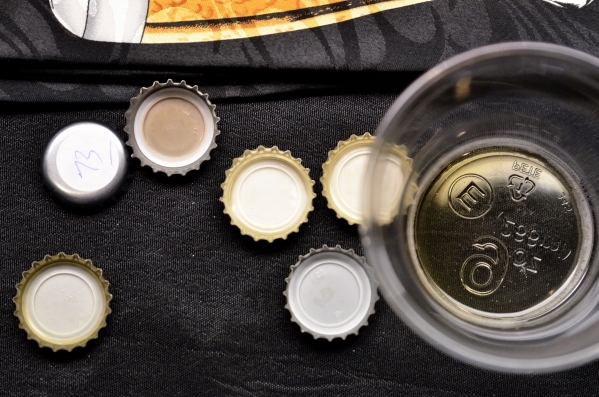Home beer makers share their tips and tricks
Like a lot of people, Fernando Lopez enjoys pouring himself a cold beer. Unlike most, it takes him several weeks or even months to be able to pour it.
"A friend and I thought it would be interesting to try brewing our own beer," Lopez said. "I'm the kind of guy that when I see something, I want to do it, and I'll keep doing it until I master it."
He has been brewing beer since last December and estimates that between brewing his own and helping friends with theirs, he's brewed 15 or 16 batches.
"I've brewed pale ales, stouts, Hefferveisen ... mostly ales because you can brew it at room temperature," he said. "For lagers, you need a refrigerator that you can control the temperature precisely and keep it at about 50 degrees."
The process is thousands of years old, but the tools are frequently tweaked and the ingredients and recipes adjusted to create new and interesting flavors. It begins, simply, with grain. There are several varieties, and choosing one is the first step to trying to create the final flavor of the beer.
"You crush the grain," Lopez said. "I usually use 8 to 15 pounds. You steep it in water that is about 150 to 155 degrees, and it breaks down the starches and extracts the sugar. You end up with a liquid called 'wort' that is essentially unfermented beer."
Lopez boils his in a turkey fryer, and the process also pasteurizes it, killing off germs.
"If I had to give just one piece of advice to someone who is starting home brewing, it's that you have to keep your sanitization at 100 percent," he said. "All your equipment should be immaculate."
Once the wort is ready, Lopez adds the hops. He adds hops pellets, ground hops kept in a vacuum-sealed bag that can be stored for a while. Fresh hops are available, but he prefers the convenience of the pellets. The addition of the hops is the point when a brewer balances the sweet and bitter flavors of the beer.
"After the hops are added, I boil it for about an hour, then I cool off the wort," Lopez said. "If you let it cool off on its own, it's going to start creating proteins that can cause haze in your beer. I use wort chiller, which is copper tubing that goes into the wort, and I run cool water through the tubing to bring down the temperature quickly. You want to cool it down to about 80 degrees."
The wort is transferred into a carboy, a container similar to a 5-gallon water jug but made of glass. He adds yeast to begin the fermentation process.
"The yeast starts eating the sugar and converting it to alcohol," Lopez said. "I top it off with an airlock that allows gas to escape but doesn't let air in. Oxygen is a huge enemy of beer. It will oxidize your beer, and it will end up tasting like newspaper or cardboard."
Different yeasts work best at different temperatures. Home brewers share favorite recipes, adjusting times, temperatures, yeast and grain type to create different kinds of beer. The process is time-consuming and fraught with a bit of peril.
"If you don't have an airlock, you risk creating what we call a beer bomb," Lopez said. "You can end up with glass and beer everywhere if the pressure builds up too much."
After a week or so of fermenting, brewers transfer the beer to another container for further fermentation and as a final container for storing the beer before serving it. Many brewers bottle their beer at this point, but Lopez kegs his, thus removing the step of sterilizing dozens of bottles and the risk of making several smaller beer bombs.
Many brewers learn their craft through trial and error, but Lopez seems to have skipped the errors.
"I've yet to brew a bad batch," Lopez said. "My first batch was a memorable batch. It was really good. I've had a mediocre batch and an acquired taste batch. I made a maple bacon brew in April, and it's a very smoky beer, and a lot of people aren't used to it. I had a hard time getting people to try it, so I still have some left. Fortunately, that one gets better as it ages."
On the east side of the Las Vegas Valley, most brewers get their supplies at U Bottle It, 2230 W. Horizon Ridge Parkway. Owner Gary Hails started the business after he retired from banking.
"When I retired, I decided to do something I enjoyed," he said. "I turned my hobby into my vocation."
The summer is the slow time for brewing as it's more work to maintain the proper temperatures for the yeast to do its work, but Hails said that by mid-September, business starts to pick up, and he gets pretty busy.
"We have equipment, ingredients, and we have classes on site," Hails said. "We also have classes and supplies for wine and cider making."
A local brewers group, the Southern Nevada Ale Fermenters Union, aka SNAFU, meets on the second Friday of every month at 7:30 p.m. at Aces & Ales, 3740 Nellis Blvd., to discuss business, brewing tips and share samples of their craft with each other.
Visit snafubrew.com.
— To reach East Valley View reporter F. Andrew Taylor, email ataylor@viewnews.com or call 702-380-4532.
Where to get started
Vegas Beer Lovers
The Meetup group is for home brewers and gathers at Aces & Ales Tenaya, 2801 N. Tenaya Way, for homebrewers and beer lovers who can not attend the second Friday night Southern Nevada Ale Fermenters Union meeting at Aces & Ales-Nellis. Beer tastings are planned. Call 702-638-2337.
Visit meetup.com/Vegas-Beer-Lovers.
Vegas Homebrew & Winemaking, 5140 W. Charleston Blvd.
Call 702-207-2337 or visit vegashomebrew.com.
U Bottle It, 2230 W. Horizon Ridge Parkway, No. 150
Call 702-565-5040 or visit ubottleit.com.
Southern Nevada Ale Fermenters Union
Meets the second Friday of every month at Aces & Ales, 3740 Nellis Blvd.
Visit snafubrew.com.


































